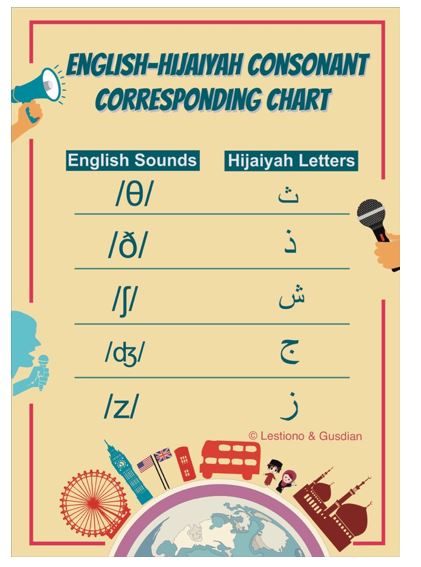Incorporating Hijaiyah Sounds in English Pronunciation Class: Students’ Perception
DOI:
https://doi.org/10.21070/jees.v5i1.380Keywords:
Hijaiyah sounds, pronunciation, student perceptionAbstract
Indonesian students still find it perplexing to acquire English pronunciation as both Bahasa as their mother tongue and English do not share equivalent phonological and phonetic systems. Meanwhile, Arabic (in this case is their Hijaiyah sounds) is proven to share some phonological resemblance to some English sounds. Therefore, it is the aim of the study to investigate the student perception of the implementation of Hjaiyah sounds in their English pronunciation class. The study employed a descriptive research design as the approach. The participants of the study were 36 students of the English Study Program in the academic year of 2019/2020. These participants were third-semester students undertaking their Intermediate Speaking class. Questionnaire and interview guide were utilized as data instruments. In collecting the data, some procedures including distributing the questionnaire and conducting the interview were carried out. In data analysis, the data from the survey were transformed into a percentage to obtain a more general image of the data description. The data from the interview were also transcribed. Finally, the findings were examined and discussed using both narrative and numerical description. As a result, this study has confirmed that the implementation of Hijaiyah sounds in teaching English pronunciation is perceived positively by the students.
HIGHLIGHTS:
- Indonesian students still find it perplexing to acquire English pronunciation as both Bahasa as their mother tongue and English do not share equivalent phonological and phonetic systems.
- Arabic (in this case is students' Hijaiyah sounds) is proven to share some phonological resemblance to some English sounds.
Downloads
References
Anam, M. K. (2018). Thai and Indonesian English Students’ Problems in Pronouncing English Fricative and Affricate Sounds: A Case Study in IAIN Kediri. In and others, editor, Fourth Prasasti International Seminar on Linguistics (Prasasti 2018). Atlantis Press.
Andi-Pallawa, B. and Alam, A. F. A. (2013). A Comparative Analysis between English and Indonesian Phonological Systems. International Journal of English Language Education, 1(3):103–129.
Atmowardoyo, H. (2018). Research Methods in TEFL Studies : Descriptive. Journal of Language Teaching and Research, 9(1):197–204.
Dardjowidjojo, S. (1978). Sentence patterns of Indonesian. University of Hawaii Press.
Donal, A. (2016). Indonesian Students’ Difficulties in Pronouncing English Dipthongs. Journal of English Education, 2(2):55–62.
Gusdian, R. I. and Lestiono, R. (2018). The use of Arabic consonant sounds to arrive at English pronunciation: A Case Study on Indonesian EFL students in tertiary level. Erudio Journal of Educational Innovation, 5(2):1–9.
Gusdian, R. I. and Lestiono, R. (2019). Cater for proper English pronunciation in the primary school level : put to use Arabic consonants. 5(2):254–261.
Lestiono, R. and Gusdian, R. I. (2017). Arriving at English pronunciation by means of Arabic consonant sounds: A case study on EFL students in Indonesian context. 7th International Conference on Literature, Humanities, Social Sciences and Education (LHSSE-2017, pages 106–117.
Sundari, W. (2018). The Difficulties of Learning English for the Basic English Learners. Journal of Cultural, Literary, and Linguistic Studies, 2(1):34–41.

Published
How to Cite
Issue
Section
License
Copyright (c) 2020 Rosalin Ismayoeng Gusdian, Riski Lestiono

This work is licensed under a Creative Commons Attribution 4.0 International License.







